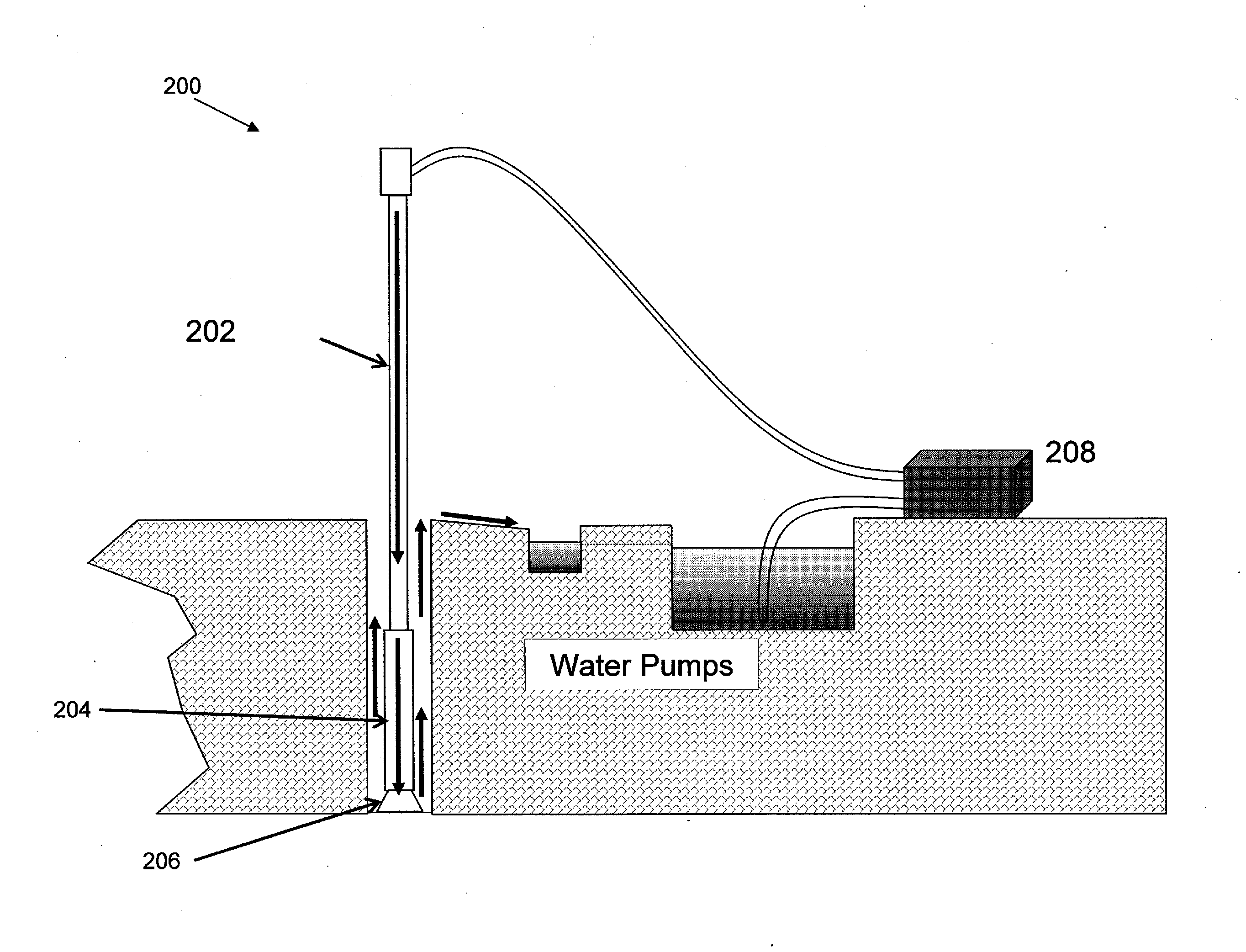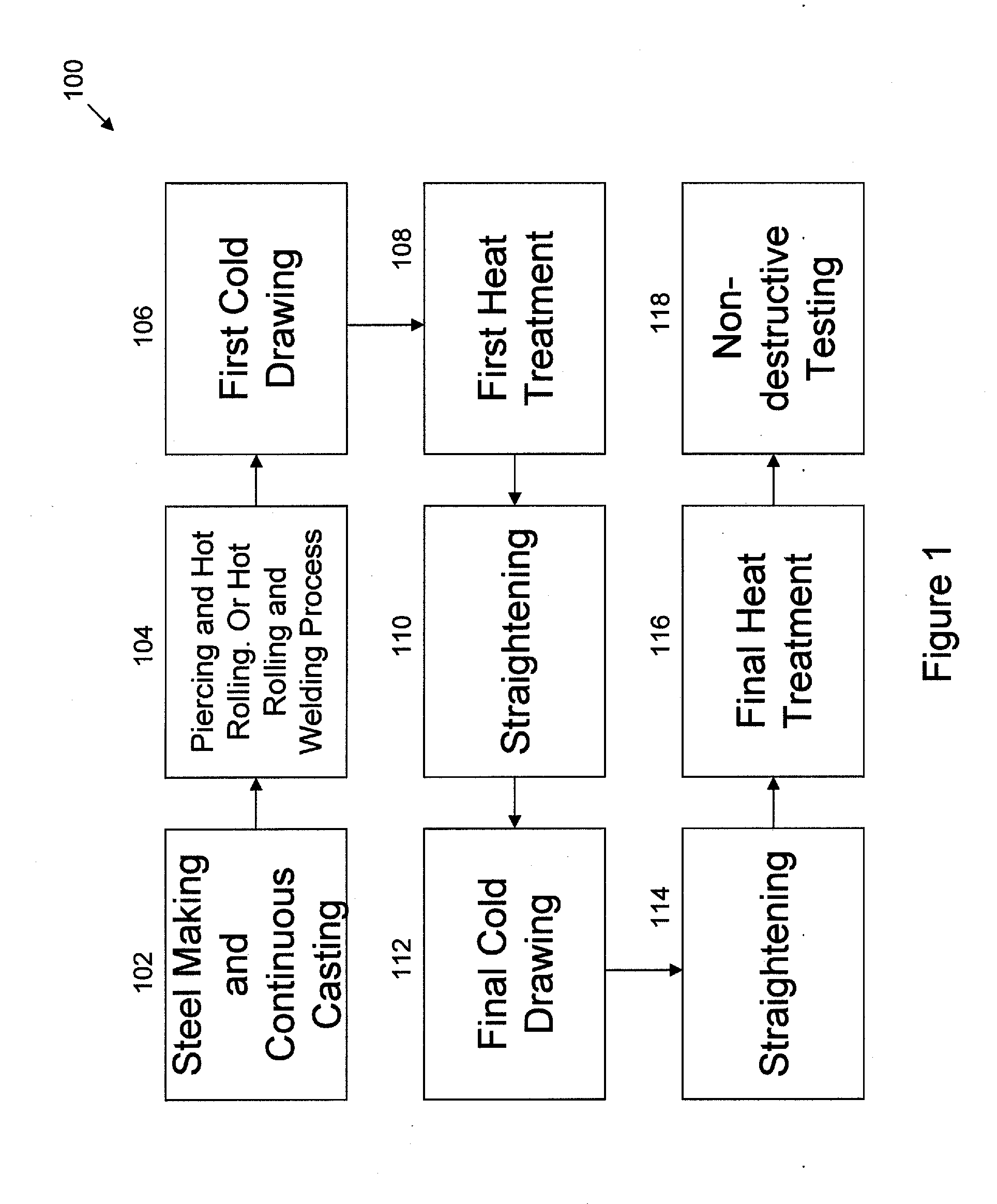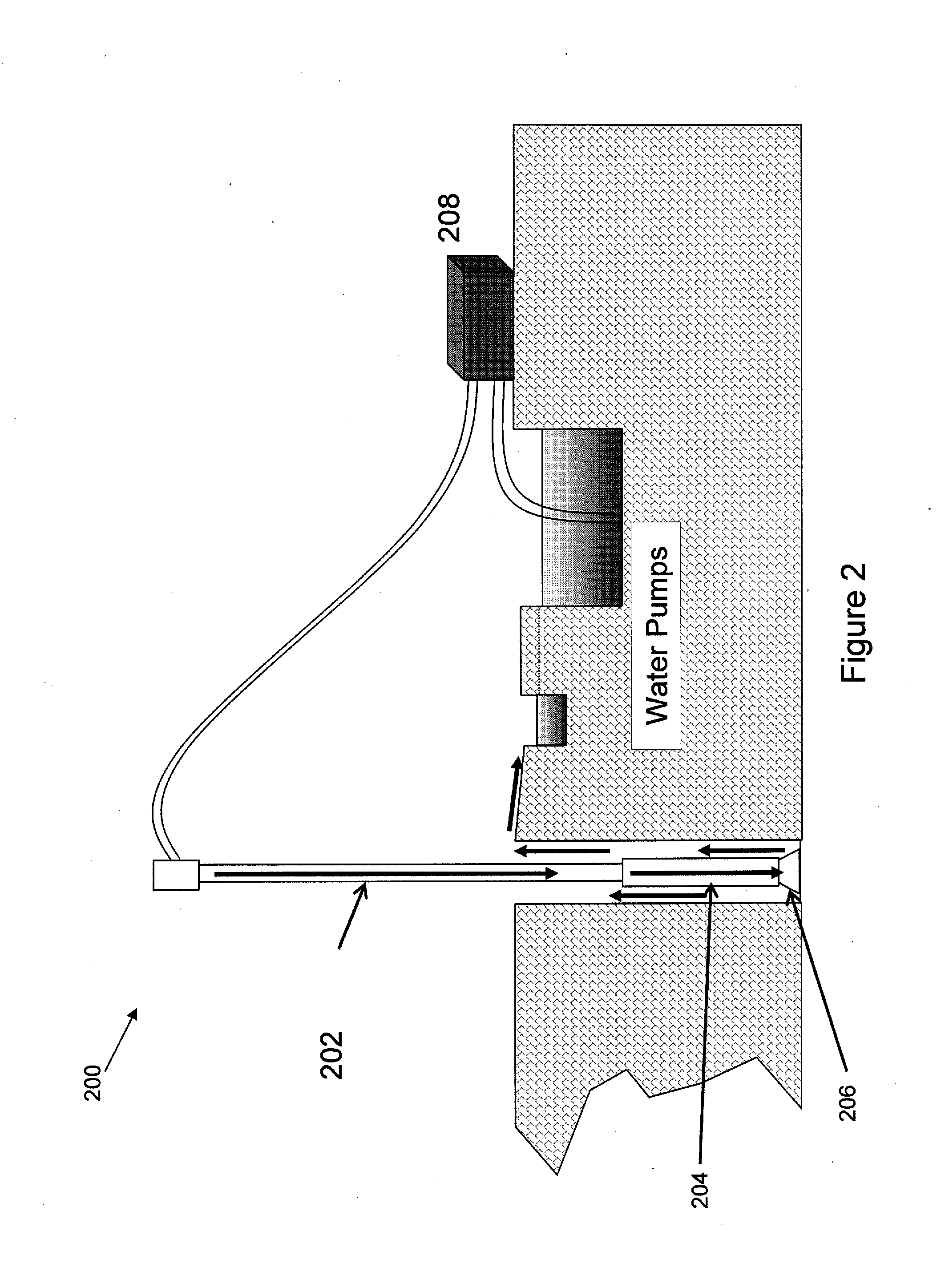Methods of manufacturing steel tubes for drilling rods with improved mechanical properties, and rods made by the same
a technology of mechanical properties and steel tubes, applied in the field of manufacturing steel tubes, can solve the problems of incomplete thread formation, vibration of threads, and inability to produce remnant tubes at the threading,
- Summary
- Abstract
- Description
- Claims
- Application Information
AI Technical Summary
Benefits of technology
Problems solved by technology
Method used
Image
Examples
examples
[0067]The following examples are provided to demonstrate the benefits of the embodiments of methods of manufacturing steel tubes. These examples are discussed for illustrative purposes and should not be construed to limit the scope of the disclosed embodiments.
[0068]Three example compositions were manufactured using the processes described with respect to FIG. 1 above and the results are shown below. The chemistry design is shown in Table III and the ranges of mechanical properties are shown in Table IV-VI. Multiple tests were done on each example.
TABLE IIIChemical Composition of Test TrialsElementExample 1Example 2Example 3C0.250.250.26Mn0.550.550.54S0.0020.0020.001P0.0110.0110.008Si0.260.260.25Ni0.0410.0410.031Cr1.011.011Mo0.270.270.47Cu0.0490.0490.07N0.00470.00470.0043Al0.0310.0310.029V0.0050.0050.006Nb0.0310.0310.023Ti0.0110.0110.012B0.00120.00120.0012Ca0.00140.00140.001Sn0.0050.0050.005As0.0030.0030.002
TABLE IVPhysical Properties of Example 1PropertyYield Strength (MPa)10249869...
PUM
| Property | Measurement | Unit |
|---|---|---|
| temperature | aaaaa | aaaaa |
| temperature | aaaaa | aaaaa |
| inner diameter | aaaaa | aaaaa |
Abstract
Description
Claims
Application Information
 Login to View More
Login to View More - R&D
- Intellectual Property
- Life Sciences
- Materials
- Tech Scout
- Unparalleled Data Quality
- Higher Quality Content
- 60% Fewer Hallucinations
Browse by: Latest US Patents, China's latest patents, Technical Efficacy Thesaurus, Application Domain, Technology Topic, Popular Technical Reports.
© 2025 PatSnap. All rights reserved.Legal|Privacy policy|Modern Slavery Act Transparency Statement|Sitemap|About US| Contact US: help@patsnap.com



